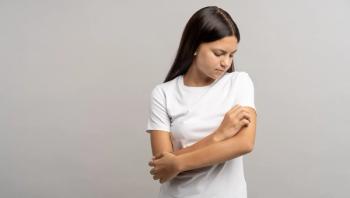
Estimating the True Prevalence of MASH and MASLD in the US
Key Takeaways
- MASH prevalence is projected to remain under 5% by 2040, with new treatments like resmetirom now available.
- Diagnostic challenges and underestimation in claims data affect accurate prevalence assessment of MASH and MASLD.
The prevalence rates of metabolic dysfunction–associated steatohepatitis (MASH) and metabolic dysfunction–associated steatotic liver disease (MASLD) are likely underestimated using claims data alone.
The true prevalence rates of metabolic dysfunction–associated steatohepatitis (MASH, formerly known as nonalcoholic steatohepatitis) and metabolic dysfunction–associated steatotic liver disease (MASLD, formerly known as nonalcoholic fatty liver disease) are estimated to be higher than claims diagnosis codes show, but the prevalence of MASH should remain under 5% by 2040 among US adults, according to research shown in posters presented at the
MASH is a more severe type of MAFLD that can damage the liver, and until recently, there were no treatments available. In March 2024, the FDA approved the first treatment for MASH and liver fibrosis.1 Before the approval, the only treatment available for individuals was lifestyle changes aimed at weight reduction.
With the new drug approval, and others in the pipeline,2 the number of patients eligible for treatment is of interest to decision makers. “Evidence suggests that the condition is underdiagnosed, possibly owing to reasons including limited symptoms in early stages, previous lack of incentive to diagnose given the unavailability of treatments, and lack of a standardized diagnosis protocol,” noted the authors of the first poster.3
They used 2 forecasting methods to estimate the diagnosis rates and prevalence of MASH over time. The epidemiological, illness-death model used estimates of the incidence of diagnosed cases of MASH from the Optum Clinformatics Data Mart and Veradigm electronic health records linked to Komodo claims. The data were pulled for 2015 to 2022. This model also used published mortality data.
The parametric statistical model projected the “true” prevalence of diagnosed and undiagnosed cases of MASH using the National Health and Nutrition Examination Survey 1988-2020 data set and forecasted linearly.
Diagnosed MASH prevalence in 2025 was estimated to be 0.5% to 1.0% in the first model and 1.0% to 1.7% with the second model. By 2040, the prevalence is projected to grow to 0.8% to 1.9% in the first model and 2.8% to 4.6% in the second model.
The second poster used a mathematical framework to quantify the underdiagnosis of MASH and MASLD using claims data.4 Although claims data are valuable for understanding the disease burden using a large sample size and follow-up data, claims data often underestimate the prevalence of these diseases.5 However, applying a mathematical framework allows researchers to adjust the estimates.
The authors used a method to identify latent individuals who have not yet been identified with the condition but are likely to have it to some degree to estimate the “true” prevalence of MASH and MASLD in a 100% sample of Medicare fee-for-service beneficiaries. MASLD and MASH were defined as having at least 1 inpatient claim or at least 2 outpatient claims with relevant diagnosis codes.
The data set included 15,105,608 individuals enrolled from January 1, 2017, to December 31, 2022, with a 1-year baseline period and 5 years of follow-up. The mean age was 74.1 years, with 57% of beneficiaries being female and 84% being White. From 2018 to 2022, 508,609 beneficiaries had MASLD and 73,220 beneficiaries had MASH, and approximately 30% had been diagnosed in 2018.
After applying the prevalence to the 2022 cohort, the prevalence of MASLD rose from 1.49% to an estimated true prevalence of 5.30% in 2022 and MASH rose from 0.26% to an estimated true prevalence of 0.85%.
“Decision-makers can use this epidemiologic information to better assess budget impact of new therapeutics for [MASH],” the authors concluded.
References
1. Joszt L. FDA approves resmetirom, first treatment for NASH with liver fibrosis. AJMC®. March 14, 2024. Accessed October 17, 2024.
2. Banks MA. MASH therapy pipeline growing, with a mix of results. Gastroenterology & Endoscopy News. August 22, 2024. Accessed October 17, 2024.
3. Fishman J, Kim Y, O’Connell T. Diagnosis rates and prevalence of nonalcoholic steatohepatitis in the United States: estimates and forecasts based on epidemiological and statistical modeling approaches. Presented at: AMCP Nexus 2024; October 14-17, 2024; Las Vegas, NV. Poster K4.
4. Fishman J, Kim Y, Nunag D, Davis M. Estimating the underdiagnosis of nonalcoholic fatty liver disease and nonalcoholic steatohepatitis in Medicare claims data. Presented at: AMCP Nexus 2024; October 14-17, 2024; Las Vegas, NV. Poster K5.
5. Hayward KL, Johnsno AL, Horsfall LU, Moser C, Valery PC, Powell EE. Detecting non-alcoholic fatty liver disease and risk factors in health databases: accuracy and limitations of the ICD-10-AM. BMJ Open Gastroenterol. 2021;8(1):e000572. doi:10.1136/bmjgast-2020-000572
Newsletter
Stay ahead of policy, cost, and value—subscribe to AJMC for expert insights at the intersection of clinical care and health economics.








































